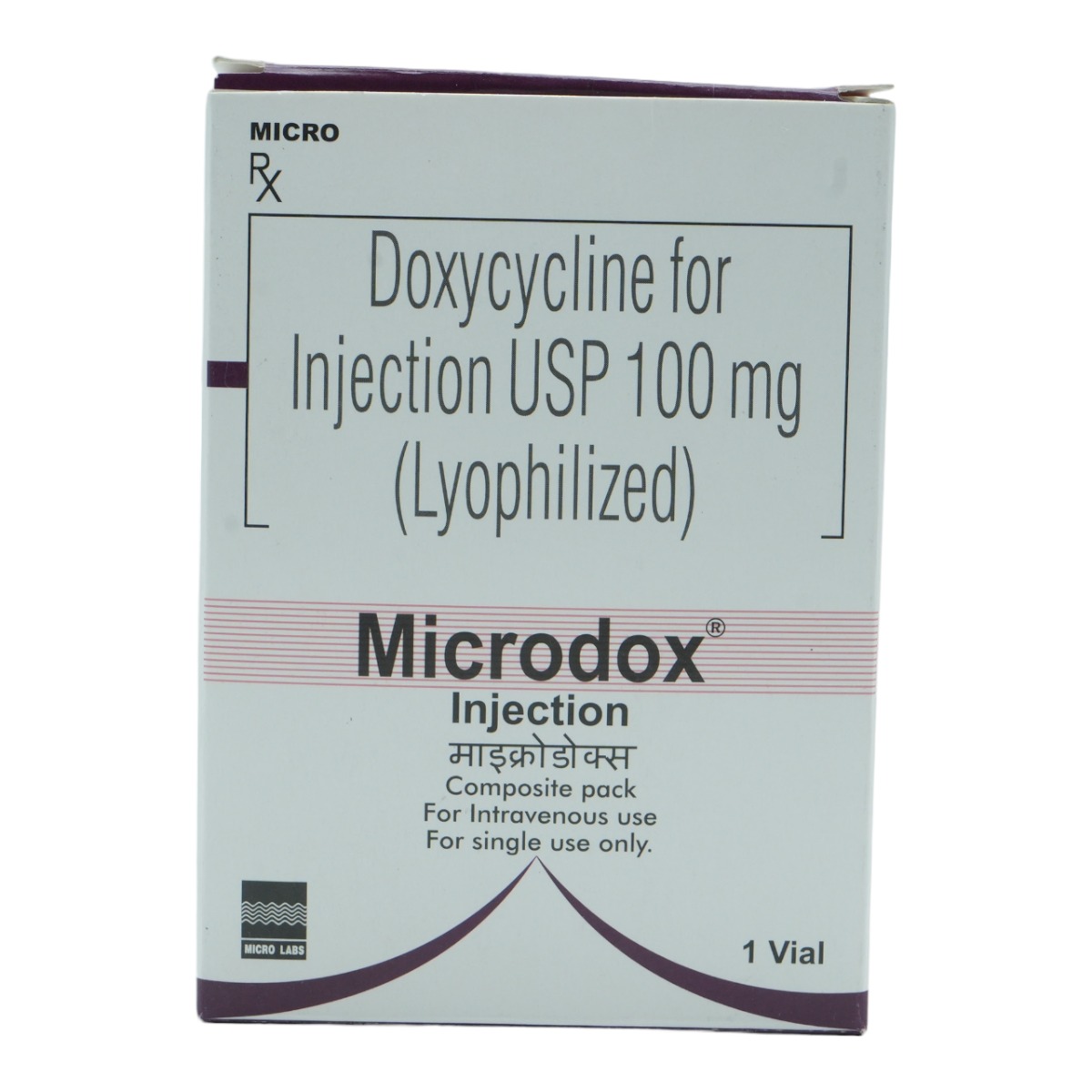Naxoline-C Injection

MRP ₹546.51
(Inclusive of all Taxes)
₹82.0 Cashback (15%)
know your delivery time
Provide Delivery Location
Composition :
Manufacturer/Marketer :
Consume Type :
Return Policy :

Secure Payment

Trusted by 8 Crore Indians

Genuine Products
Therapeutic Class
Manufacturer/Marketer address
Author Details
We provide you with authentic, trustworthy and relevant information
FAQs
Naxoline-C Injection stops the growth of bacteria by preventing the synthesis of essential proteins necessary for their survival. Thereby, Naxoline-C Injection helps treat bacterial infections.
No, Naxoline-C Injection should not be stopped even if you feel better as it is an antibiotic medication and completing the full course is necessary; otherwise, the infection might re-appear in a more severe form and will also become difficult to treat due to antibiotic resistance.
If you are taking Naxoline-C Injection, avoid taking antacids containing aluminium, calcium or magnesium or other drugs containing these cations; oral zinc, iron salts or bismuth preparations within 2 hours of consumption of Naxoline-C Injection as they may affect the absorption of Naxoline-C Injection. Avoid taking dairy products within 2 hours of taking Naxoline-C Injection as they may also impair the absorption of Naxoline-C Injection.
Use of Naxoline-C Injection during tooth development (last half of pregnancy, infancy, and in children below the age of 8 years) may cause permanent staining of teeth (yellow-grey-brown). So, it is not recommended for pregnant women, breastfeeding mothers, and children below 8 years of age.
Naxoline-C Injection may make your skin sensitive to sunlight. So, apply sunscreen while going out and wear protective clothing and sunglasses. Avoid prolonged and unnecessary exposure to sunlight.
Naxoline-C Injection may lower the effectiveness of hormonal contraceptives such as birth control pills, rings, patches, or injections. Consult your doctor if you have any concerns, your doctor may advise regarding other forms of contraception.
Naxoline-C Injection does not completely prevent malaria caused by P. falciparum as Naxoline-C Injection is given as a prophylactic regimen (protection) whenever anyone enters a malaria-prone area.
Disclaimer
Alcohol
Caution
It is not known if alcohol affects Naxoline-C Injection. Please consult your doctor if you have any concerns.
Pregnancy
Unsafe
Naxoline-C Injection belongs to pregnancy category D. There are no adequate and well-controlled studies on the use of Naxoline-C Injection in pregnant women. In some cases, taking Naxoline-C Injection during pregnancy may affect tooth and bone development in the unborn baby. So, if you are pregnant or planning for pregnancy contact the doctor before using Naxoline-C Injection.
Breast Feeding
Caution
Naxoline-C Injection is excreted in the breast milk. However, the extent of absorption of Naxoline-C Injection by the breastfed infant is not known. Hence, the nursing mother should consult the doctor before using Naxoline-C Injection.
Driving
Caution
It is not known if Naxoline-C Injection affects your ability to drive. Drive or operate machinery only if you are alert.
Liver
Caution
Naxoline-C Injection is to be taken with caution, especially if you have a history of liver diseases/conditions. The dose may have to be adjusted by your doctor.
Kidney
Safe if prescribed
At the recommended doses, Naxoline-C Injection is safe to use in patients with kidney disease if prescribed by a doctor.
Children
Caution
Use of Naxoline-C Injection during tooth development in infants and children below 8 years of age may cause permanent staining of teeth (yellow-grey-brown). So, it is not recommended for children below 8 years of age.
Product Substitutes
About Naxoline-C Injection
Naxoline-C Injection belongs to a group of medications called tetracycline antibiotics used to treat bacterial infections such as urinary tract infections, intestinal infections, respiratory infections, eye infections, skin infections, sexually transmitted infections (gonorrhoea, syphilis), and gum infections (periodontitis). Besides this, Naxoline-C Injection may also be used to treat or prevent anthrax.
Naxoline-C Injection contains 'Doxycycline' which stops the growth of bacteria by preventing the synthesis of essential proteins necessary for their survival. Thereby, Naxoline-C Injection helps treat bacterial infections. It is a broad-spectrum antibiotic which is effective against both gram-negative and gram-positive bacteria.
Naxoline-C Injection will be administered by a healthcare professional; do not self-administer. In some cases, Naxoline-C Injection may cause pain, itching, swelling or redness at the site of injection, nausea, vomiting, or diarrhoea. Most of these side effects of Naxoline-C Injection do not require medical attention and gradually resolve over time. Please consult your doctor if these side effects become troublesome.
Do not take Naxoline-C Injection if you are allergic to any of the components. Consult your doctor if you are pregnant or breastfeeding. Use of Naxoline-C Injection during tooth development (last half of pregnancy, infancy, and in children below 8 years) may cause teeth staining (yellow-grey-brown). Keep your doctor informed about your health condition and medications to rule out any interactions/side effects.
Uses of Naxoline-C Injection
Medicinal Benefits Mweb
Medicinal Benefits
Naxoline-C Injection belongs to the class of medicines called tetracycline antibiotics which is effective against a wide range of bacteria, including gram-negative, gram-positive bacteria, anaerobes, and some parasites. It is used to treat respiratory tract infections (influenza, pneumonia), genitourinary infections (syphilis, gonorrhoea), anthrax infection, sinuses, eye, and skin infections. Besides this, it is also indicated in the tick-borne infections (typhus fever) caused by the Rickettsia group of bacteria like typhus fever. Off-label, usage includes the prevention of malaria and the treatment of acne.
Directions for Use
Side Effects of Naxoline-C Injection
- Pain, itching, swelling or redness at the site of injection
- Nausea
- Vomiting
- Diarrhoea
Drug Warnings
Do not take Naxoline-C Injection if you are allergic to any of its contents. Inform your doctor if you have lupus, or if you are pregnant or breastfeeding. Use of Naxoline-C Injection during tooth development (last half of pregnancy, infancy, and in children below 8 years) may cause teeth staining (yellow-grey-brown). Consult your doctor if you experience any skin reactions, fever, muscle, or joint problems.
Drug-Drug Interactions Checker List
- ACITRETIN
- ISOTRETINOIN
- WARFARIN
- DIGOXIN
- PHENYTOIN
- CARBAMAZEPINE
- ALUMINIUM
- CALCIUM
- MAGNESIUM
- BISMUTH SUBSALICYLATE
Habit Forming
Special Advise
- Wear sunglasses and sunscreen when you go out in the sun as Naxoline-C Injection can make your skin sensitive to light.
- Maintain a gap of 2 hours between Naxoline-C Injection and iron supplements and antacids as taking them together might affect the working of Naxoline-C Injection.
- Naxoline-C Injection might affect certain lab tests, inform the person doing the tests that you are taking Naxoline-C Injection.
Diet & Lifestyle Advise
- It would be best to take probiotics after completing the full course of Naxoline-C Injection to restore healthy bacteria in the intestine that may have been killed due to the usage of antibiotics. Taking probiotics after antibiotic treatment can reduce the risk of antibiotic-associated diarrhoea. Certain fermented foods like yogurt, cheese, sauerkraut and kimchi can help restore the intestine's good bacteria.
- Include more fibre-enriched food in your diet, as it can be easily digested by gut bacteria which helps stimulate their growth. Whole-grain bread, and brown rice, should be included in your diet.
- Avoid taking too much calcium enriched foods and drinks as it might affect the working of Naxoline-C Injection.
- Avoid intake of alcoholic beverages with Naxoline-C Injection as it can make you dehydrated and affect your sleep. This can make it harder for your body to aid Naxoline-C Injection in fighting off infections.
All Substitutes & Brand Comparisons

Have a query?


_0.jpg?tr=q-85)




